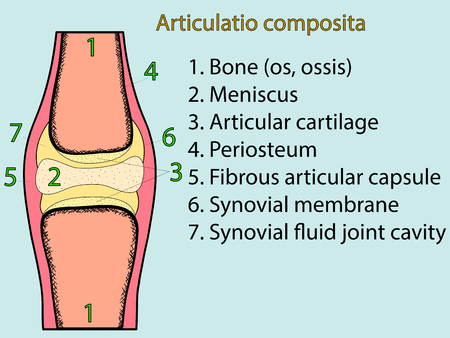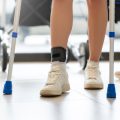Introduction to Taping and Bracing in Rehabilitation
Taping and bracing techniques have become fundamental components of modern rehabilitation practice across the United Kingdom. Their origins can be traced back to early twentieth-century physiotherapy, where simple elastic bandages were employed to provide support and restrict movement following injury. Over the decades, these methods have evolved significantly, integrating advances in materials science and a deeper understanding of human biomechanics. Today, taping and bracing are underpinned by robust principles aimed at facilitating optimal functional recovery, minimising the risk of re-injury, and supporting early mobilisation.
The rationale behind these techniques lies in their ability to deliver external support to injured or vulnerable joints and soft tissues without significantly impeding natural movement patterns. This approach aligns with contemporary rehabilitation philosophies that emphasise patient-centred care, functional outcomes, and evidence-based interventions. In the UK context, uptake of taping and bracing has been further driven by their adaptability across a broad spectrum of conditions—from acute sports injuries managed in elite football clubs to chronic musculoskeletal disorders seen in NHS outpatient clinics. As such, understanding the historical development, guiding principles, and clinical rationale of taping and bracing is essential for both seasoned clinicians and those new to rehabilitation practice within British healthcare settings.
2. Types of Taping and Bracing Methods
Within modern rehabilitation practice across the UK, clinicians utilise a variety of taping and bracing techniques tailored to specific injuries, conditions, and therapeutic goals. Understanding the differences in materials, applications, and outcomes is critical for evidence-based practice.
Kinesiology Tape
Kinesiology tape has become increasingly popular in British clinics due to its flexibility and ability to support soft tissues without restricting movement. This elastic cotton-based tape is applied along muscles or joints to facilitate proprioception, reduce swelling, and aid in pain management. Practitioners often use kinesiology tape post-injury or during the return-to-sport phase as it allows for functional mobility while supporting recovery.
Rigid Taping
Rigid taping involves the use of non-elastic adhesive tape designed to provide firm support and restriction of movement. Commonly used for acute ligament injuries—such as ankle sprains—rigid taping is a staple in both NHS and private settings throughout the UK. Its main objective is to stabilise joints, prevent further injury, and enable controlled movement during the healing process. Rigid taping is especially prevalent in sports physiotherapy and orthopaedic rehabilitation.
Custom Bracing
Custom braces are bespoke devices fabricated to fit an individual’s anatomy, offering targeted immobilisation or support. In British rehabilitation clinics, custom bracing is employed for complex injuries, post-surgical management, or chronic joint instability. These devices can be made from various materials such as thermoplastics or neoprene, depending on the clinical indication. Customisation ensures optimal fit and maximises therapeutic benefit, particularly for patients requiring long-term or specialist support.
Comparison of Common Taping and Bracing Methods in UK Clinical Practice
| Method | Main Material | Application | Clinical Use in UK |
|---|---|---|---|
| Kinesiology Tape | Cotton with elastic fibres | Facilitate muscle function, reduce swelling, pain relief | Soft tissue injuries, return-to-play protocols |
| Rigid Tape | Zinc oxide adhesive tape (non-elastic) | Restrict movement, joint stability | Ankle/knee sprains, acute injury management |
| Custom Brace | Thermoplastic/neoprene/metal components | Immobilisation or dynamic support tailored to patient | Post-operative care, chronic instability, neurological conditions |
Practical Considerations in British Settings
The selection of taping or bracing method depends on several factors: the nature of the injury, patient activity levels, duration of intervention required, and accessibility within NHS versus private healthcare pathways. Clinicians must balance clinical efficacy with patient comfort and compliance—particularly relevant given the diverse population served within the UK’s healthcare system. Ultimately, integrating these techniques appropriately enhances rehabilitation outcomes and aligns with best practice standards recognised nationwide.

3. Clinical Indications and Evidence Base
Within the UK rehabilitation context, taping and bracing techniques are most frequently indicated for a range of musculoskeletal and neurological conditions, as outlined in current NICE (National Institute for Health and Care Excellence) guidelines and corroborated by recent clinical research. The application of these modalities is not arbitrary; it is grounded in evidence-based protocols that seek to optimise patient outcomes while considering both safety and efficacy.
Musculoskeletal Conditions
Taping and bracing are extensively utilised in the management of acute injuries such as ankle sprains, ligamentous instability, and patellofemoral pain syndrome. According to UK clinical guidance, rigid taping may provide external support during the early phase of rehabilitation, reducing excessive movement and allowing healing structures to recover. Similarly, functional bracing is advocated following anterior cruciate ligament (ACL) injuries or post-operative repair, particularly to facilitate controlled mobilisation and prevent re-injury.
Chronic Joint Instabilities
In cases of chronic joint instability—most notably in the ankle, knee, or shoulder—prophylactic taping or custom bracing is often recommended. Current evidence from systematic reviews published in British journals demonstrates that these interventions can significantly decrease the risk of recurrent sprains and enhance proprioceptive feedback during sporting activity. The Chartered Society of Physiotherapy (CSP) further highlights the role of bracing in managing osteoarthritis-related knee instability, supporting its use alongside exercise therapy as part of an integrated care pathway.
Neurological Conditions
Taping also finds a role within neurological rehabilitation, particularly in managing conditions such as stroke or multiple sclerosis where muscle weakness or spasticity impairs functional movement. Techniques like kinesiology taping have been shown in UK-based trials to improve postural control and reduce pain when used as an adjunct to conventional physiotherapy. Bracing devices—such as ankle-foot orthoses—are well-supported by NICE guidelines for improving gait stability in patients with foot drop or lower limb weakness.
Summary of Evidence
The scientific literature underscores a growing consensus around the selective use of taping and bracing within modern rehabilitation practice. While not a panacea, their targeted application—guided by robust clinical assessment—can facilitate earlier return to activity, mitigate secondary complications, and promote patient confidence. As always, interventions should be tailored to individual needs, with ongoing evaluation ensuring alignment with best practice recommendations across the UK healthcare system.
4. Integration into Rehabilitation Programmes
The integration of taping and bracing into multi-disciplinary rehabilitation programmes has become an essential component of modern clinical practice in the UK. These techniques are not used in isolation; rather, they are incorporated within a holistic framework that encompasses physiotherapy, occupational therapy, and patient self-management strategies. This collaborative approach ensures that interventions are tailored to individual needs and optimised for functional recovery.
Supporting Physiotherapy Interventions
Taping and bracing serve as adjuncts to physiotherapeutic interventions by providing external support to injured or compromised structures. In clinical settings, they are often employed to facilitate early mobilisation while minimising the risk of re-injury. For example, rigid taping may be used post-ankle sprain to allow graded weight-bearing during supervised exercise programmes. Similarly, knee braces can enable patients with ligamentous injuries to participate in targeted strengthening regimes without compromising joint stability.
Enhancing Occupational Therapy Outcomes
Within occupational therapy, taping and bracing techniques are integrated to assist patients in regaining independence in daily activities. Dynamic taping can support hand function in individuals recovering from wrist fractures or repetitive strain injuries, allowing participation in fine motor tasks such as writing or meal preparation. Occupational therapists frequently collaborate with physiotherapists to ensure that orthotic devices complement therapeutic goals and promote optimal engagement in life roles.
Facilitating Patient Self-Management
A key aspect of modern rehabilitation is empowering patients to take an active role in their recovery. Taping and bracing can be taught as self-management tools, enabling individuals to manage minor exacerbations or prevent recurrent injuries. Education on correct application techniques, awareness of when to use support devices, and guidance on skin care are integral components of patient-centred care. This approach fosters confidence and promotes long-term adherence to rehabilitation plans.
Summary Table: Integration Across Disciplines
| Discipline | Role of Taping & Bracing | Typical Applications |
|---|---|---|
| Physiotherapy | Facilitates safe mobilisation; supports injury-specific exercises | Ankle sprains, ligamentous injuries, post-operative support |
| Occupational Therapy | Enables participation in daily activities; aids fine motor function | Wrist/hand injuries, repetitive strain conditions, upper limb fractures |
| Patient Self-Management | Provides autonomy; helps manage symptoms outside clinic setting | Mild sprains/strains, chronic joint instability, preventative support during activity |
Conclusion: A Collaborative Approach
The seamless integration of taping and bracing within multi-disciplinary rehabilitation programmes highlights their value in supporting both clinical interventions and patient empowerment. By combining these techniques with evidence-based therapeutic practices, healthcare professionals across the UK enhance recovery outcomes and promote sustained functional independence.
5. Professional Considerations and Patient Perspectives
Examination of Training Requirements in the UK Context
Taping and bracing are specialised interventions within rehabilitation, requiring practitioners to undergo comprehensive training to ensure safe and effective application. In the UK, physiotherapists and allied health professionals must adhere to standards set by regulatory bodies such as the Health and Care Professions Council (HCPC) and the Chartered Society of Physiotherapy (CSP). Continuing professional development (CPD) is essential, with many NHS Trusts and private clinics offering regular workshops and courses focused on modern taping techniques, patient assessment, and clinical reasoning. Mastery of these skills ensures that interventions are evidence-based and tailored to individual needs.
Ethical Considerations in Clinical Practice
The ethical use of taping and bracing requires practitioners to consider patient autonomy, informed consent, and clinical justification for intervention. Within the British healthcare system, transparency is paramount; clinicians must clearly communicate the benefits, limitations, and potential risks associated with each technique. Respect for patient dignity and preferences is embedded in NHS values, ensuring that decisions align with both best practice guidelines and the personal circumstances of each patient. Additionally, practitioners are expected to remain impartial in their choice of products or methods, avoiding commercial bias while prioritising patient well-being.
Patient Engagement Strategies
Effective rehabilitation hinges on meaningful patient engagement. Involving patients in decision-making fosters adherence to prescribed interventions such as taping or bracing. British rehabilitation specialists commonly employ shared decision-making models—discussing treatment options openly and encouraging questions. Education plays a pivotal role: providing accessible information leaflets, practical demonstrations, and follow-up support empowers patients to participate actively in their recovery process. By respecting cultural sensitivities, addressing language barriers where necessary, and offering personalised guidance, healthcare professionals can enhance trust and optimise outcomes.
Conclusion
In summary, successful integration of taping and bracing techniques within modern British rehabilitation practice necessitates rigorous professional training, ethical awareness, and robust patient engagement strategies. Together, these considerations underpin high-quality care that respects both clinical standards and individual patient perspectives.
6. Future Directions and Innovations
The landscape of taping and bracing in modern rehabilitation practice is rapidly evolving, driven by technological advancements and a growing body of research within the UK’s healthcare sector. As clinicians and researchers continue to seek optimal patient outcomes, several emerging trends are shaping the future of these supportive interventions.
Advancements in Materials
One of the most significant developments lies in the innovation of materials used for taping and bracing. Traditional rigid tapes and braces are increasingly being replaced or supplemented by lightweight, breathable, and hypoallergenic alternatives. These new materials enhance patient comfort, reduce skin irritation, and offer improved adaptability to various anatomical regions. In addition, eco-friendly and sustainable options are gaining traction, aligning with broader NHS initiatives to promote environmental responsibility within clinical practice.
Integration of Digital Health Technologies
The integration of digital health technologies represents a transformative shift in how taping and bracing are utilised across the UK. Wearable sensors embedded within braces can now monitor joint movement, muscle activity, and adherence to prescribed regimens. Data collected from these devices can be transmitted securely to physiotherapists or rehabilitation specialists for real-time feedback and remote monitoring. This not only enhances patient engagement but also facilitates more personalised care plans, ultimately supporting the principles of evidence-based practice.
Telehealth and Remote Rehabilitation
Telehealth services have seen a marked increase in uptake across the UK, particularly following the COVID-19 pandemic. The potential for remote assessment and guidance on taping or bracing application has become a practical reality for many practitioners. Video consultations allow clinicians to instruct patients on self-application techniques, troubleshoot issues, and adjust interventions without requiring frequent face-to-face appointments—a development that is especially beneficial in rural or underserved areas.
Customisation Through 3D Printing
Another promising area is the use of 3D printing technology for bespoke brace fabrication. Custom-fitted orthoses can now be designed using digital scans of a patient’s anatomy, resulting in devices that maximise support while minimising bulkiness. This level of customisation enhances both functional outcomes and patient satisfaction, reflecting the UK’s commitment to delivering tailored healthcare solutions.
As these innovations continue to emerge, it is essential that practitioners remain informed through ongoing professional development and collaboration with industry partners. The future of taping and bracing in British rehabilitation practice will undoubtedly be characterised by greater personalisation, enhanced efficacy, and seamless integration with digital health platforms—ultimately benefitting both patients and clinicians alike.


